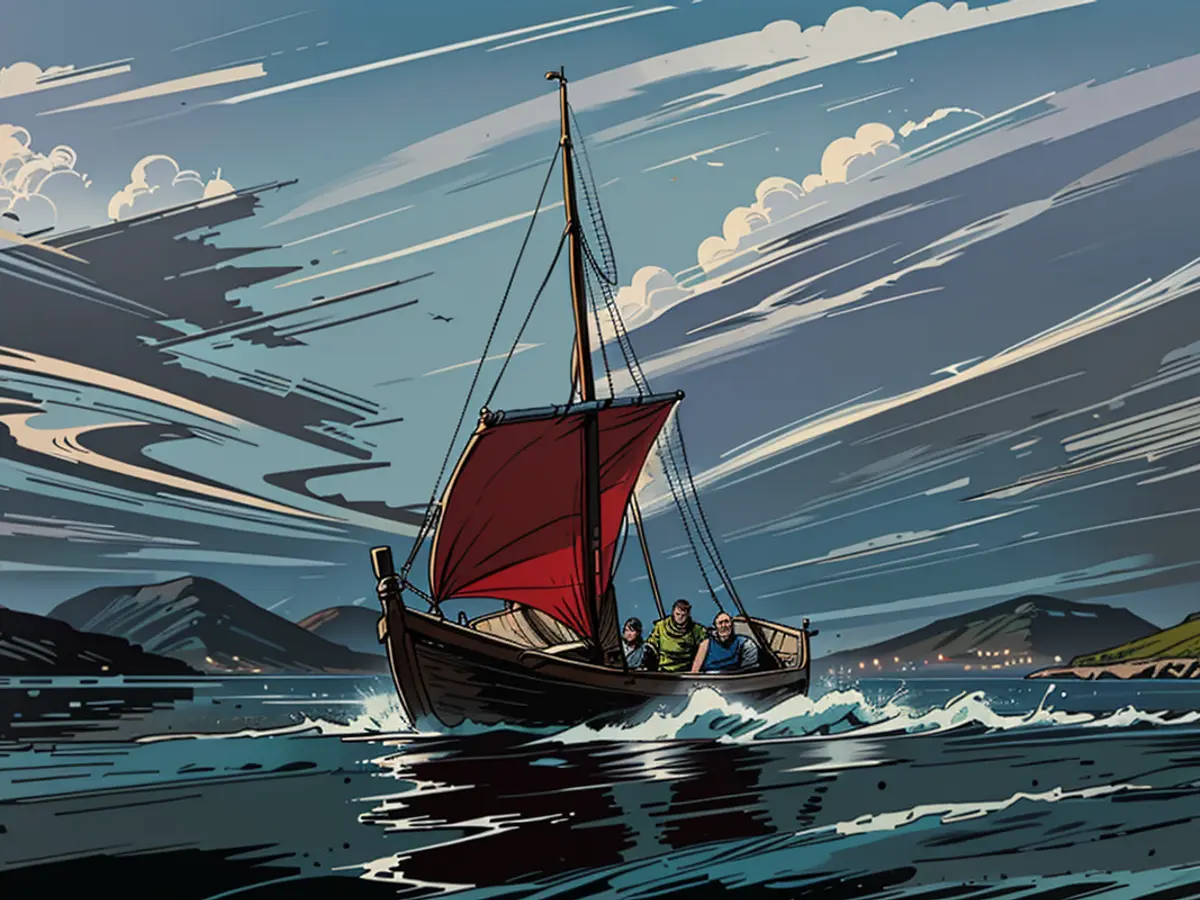Ancestors of Vikings navigated towards the Arctic region
In the Middle Ages, walrus ivory was a coveted trade item. However, the location from which traders procured this commodity was a mystery until recently. A new analysis suggests that Nordic settlers possibly ventured as far as the Arctic of North America to hunt walruses for this purpose.
Research into walrus ivory artifacts indicates that medieval European traders traversed vast Arctic waters. While initial interactions with indigenous peoples might have been rare, regular trade may have emerged later, according to a research team published in "Science Advances".
This early trade could have paved the way for broader connections between various Arctic cultures and regions, the researchers led by Emily Ruiz-Puerta from the universities of Copenhagen and Groningen hypothesized. Furthermore, the meeting of European Norse men and North American indigenous peoples marked the first reunion of the two primary branches of humanity since their migration from Africa in the Pleistocene.
The Arrival of the Greenlanders
These Greenlanders, or Grænlendingar in Icelandic, were Nordic settlers who established settlements on Greenland around 986 under Erik the Red's leadership. They were descendants of Vikings who had settled in Iceland. Their presence lasted approximately 500 years before the settlements were abandoned in the 15th century.
According to the study, walrus ivory was highly valued in medieval Europe. It was used for artistic carvings, decorations, and luxurious everyday items such as hairbrushes. The sources of these walrus tusks were unknown until now, the research team stated.
The new analysis suggests that during the medieval warm period, from about 950 to 1250 AD, Nordic settlers might have sailed deep into the Arctic of North America to hunt walruses due to the depletion of local populations near Norway and Iceland.
The Habitat of the Hunted Animals
To trace the medieval 'Arctic ivory route', the team analyzed 31 cultural items made from walrus tusks chronologically and genetically. These findings were compared with genetic profiles of Atlantic walruses, which inhabited specific areas between 900 and 1500 AD.
The walruses inhabited various Arctic hunting grounds. The chronology of the findings suggests that ivory hunters ventured further north in search of walrus as European demand for ivory surged and could not be met by regional populations.
Approximately half of the pieces originated from a region called North Water (Greenlandic: Pikialasorsuaq) in the Canadian Arctic, an open water body in the Davis Strait, far north and west of Greenland. Walruses, along with ringed seals and certain whale species, are found there year-round.
Monopoly on Ivory
Climate conditions and advancements in seafaring skills likely enabled the Greenlandic settlers to exploit distant populations themselves, the researchers suggested. This is also evidenced by the discovery of intermediate storage sites for walrus hides and tusks far from known Inuit settlements of the time.
Later interactions with Inuits might have occurred as climatic conditions worsened again. Between the early 12th and mid-14th century, the Norse in Greenland held a near monopoly on ivory supply to Europe.
The Greenlanders, established by Erik the Red in the 10th century, may have ventured to North Water in the Canadian Arctic during the medieval warm period to hunt walruses due to local population depletion in Norway and Iceland. This region, rich in walruses, ringed seals, and certain whale species, became a significant source of walrus ivory for the Greenlanders, potentially contributing to their monopoly on ivory supply to medieval Europe.








